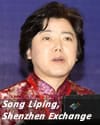China will take a cue from foreign investors in the next phase of developing its markets. The qualified foreign institutional investor (QFII) scheme has just celebrated its 12th birthday, having been introduced in November 2002.
There is a belief among Chinese authorities that more large financial institutions are on the verge of implementing long-term plans in the Chinese capital market and the active participation of overseas investors, whether by QFII or Stock Connect, will form a foundation of the market to realize its internationalisation plans.
By the end of November 2014, a total of 272 QFIIs had been approved, accounting for US$ 64 billion worth of investment quota. The quotas have been awarded to a range of different institutions, including sovereign wealth funds, investment banks, insurers and university endowment funds.
When the QFII scheme was introduced, China’s regulators hoped that the participants would become long-term value investors and contribute to market stabilisation and price discovery.“In terms of time span and coverage, QFIIs serve as a window for us to know and understand overseas investors,” said Song Liping, president and CEO of the Shenzhen Stock Exchange, speaking at the 2015 Caijing annual meeting. “In spite of their diversity, QFIIs have practiced a value investment philosophy that regulators had hoped for – in terms of asset allocation preferences and turnover rates.”
In 2013, QFIIs’ average holding period was 115 days; the average return on equity of the stocks they held was 18% and the dividend yield ratio of such stocks was 1.57%.
She believes that QFII’s have taken more interest in the governance of listed companies than mainland investors.
She gave the example of the opposition posed by a university endowment QFII, following which, a local state-owned assets administrative office changed its planned appointment of a director to a listed company. That, she believes, sent a message to domestic institutional investors that they could display more activism.
She believes that Chinese investors need to learn from the more mature management philosophy and robust management system of QFIIs, which are weak links locally.
Concerning the matter of selecting domestic asset managers, she commented.
“On one hand, QFIIs value a long-term return on investment and do not put much pressure on managers for short-term performance fluctuations. They trust the managers they appointed. On the other hand, QFIIs have a very strict and scientific selecting process for managers and only a few managers can win their favor. So they never hire any manager they mistrust.”
She believes that a key lesson to be learned from QFIIs derives from their understanding of real economics and industries based on their long experience of investment in overseas markets. On Shenzhen’s market, their asset allocation to stocks on the SME Board and ChiNext Market have been increasing in the past few years.
“They witnessed industrial life cycles and industry upgrading of both advanced countries and emerging markets. Therefore, they are in a good position to analyse and understand these industries from a broader and long-term perspective.”
In the primary market, she finds that QFIIs practiced sounder risk controls in the subscription for IPOs than local investors have done. Statistics of QFII subscriptions to IPO shares during 2009-2012 showed that bids from QFII holders for IPO shares dropped in terms of both absolute and relative volumes during a period that she described as having certain ‘irrational’ inflationary pricing traits.
